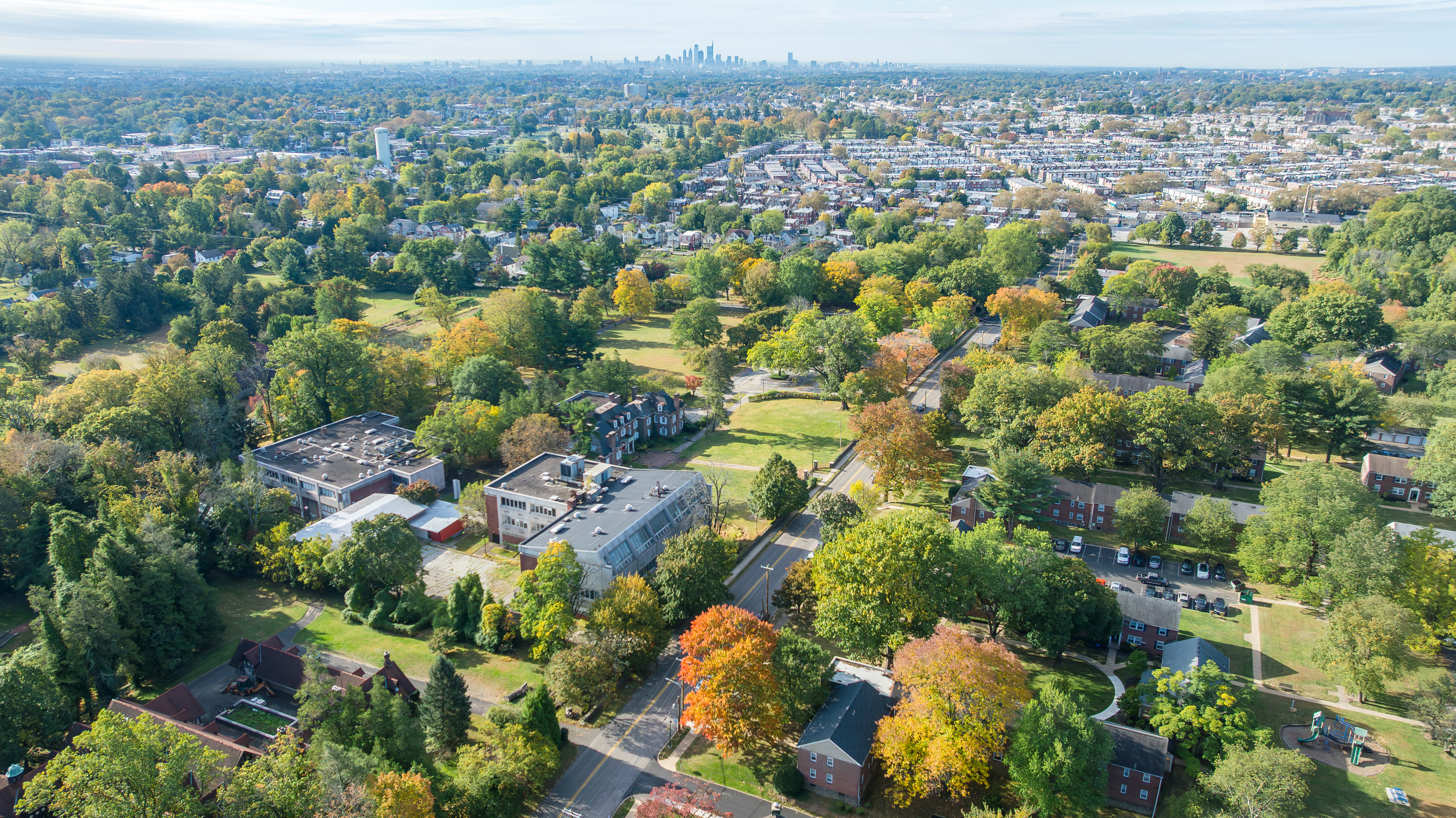The campus of Elkins School of Art stands on historic ground — the very estate where the renowned Tyler School of Art and Architecture was born in 1935. Nearly a century ago, arts patron Stella Elkins Tyler, of the Elkins/Widener family, donated her Elkins Park estate to Temple University with the vision that it would become “an environment for the advancement of the fine arts and individual creativity.”

The Georgian Terrace in Elkins Park, Pennsylvania — originally built in 1905 as the George F. Tyler Mansion — was designed by Horace Trumbauer, one of the most celebrated American architects of the Gilded Age. Known for his grand estates commissioned by the Widener and Elkins families, Trumbauer conceived this residence in the Georgian Revival style, blending classical symmetry with refined craftsmanship.
Today, this architectural landmark stands as the historic home of the Stella Elkins Tyler School of Art, now the Elkins School of Art, preserving both the artistic vision of its patron and the architectural genius of its creator.

Once home to the renowned Tyler School of Art & Architecture, our campus stands on a foundation rich with artistic and academic legacy. Through this balanced approach, we ensure that each restoration project is not only about preserving the past, but also about shaping spaces that will inspire and serve future generations. Our vision is to harmoniously blend timeless architecture with contemporary design — creating environments where history, creativity, and purpose coexist in perfect balance.


Stella Elkins Tyler (1884–1963) was more than a “patron of the arts.” She was an artist and visionary who turned her personal search for beauty into a lasting gift for others. Born into the distinguished Elkins/Widener family, she inherited not only wealth but a deep love for culture from her grandfather, William Lukens Elkins, founder of the Philadelphia Orchestra.
Educated privately and later in France, Stella absorbed European artistic traditions while cultivating her own creative sensibility. After marrying George Frederick Tyler in 1905, she led a life immersed in music and theater, but it was not until her forties that she discovered her true vocation in sculpture — a medium that became both her art and her healing.
Guided by Boris Blai, a student of Auguste Rodin, Stella found in sculpture a way to restore order and peace to her spirit. Their shared belief that art could renew the human heart inspired Stella and her husband to donate their Elkins Park estate, Georgian Terrace, to Temple University in 1935. From this act of generosity, the Stella Elkins Tyler School of Fine Arts was born — later known as the Tyler School of Art and Architecture.
Through her sculptures and her vision for education, Stella left a legacy that continues to shape generations of artists and architects. Her life stands as a testament to the enduring power of creativity, courage, and generosity — a story that still inspires all who walk the historic grounds of Elkins Park today.

Under Blai’s visionary leadership, the Stella Elkins Tyler School of Fine Arts became one of America’s most progressive art schools. Rooted in a belief that art should serve both personal expression and the public good, the school fostered an educational philosophy that balanced technical mastery with a broad liberal arts foundation. Within these studios and gardens, students learned to see the world not merely as it is, but as it could be — shaping their craft to contribute meaningfully to society.
Throughout the mid-20th century, this campus flourished as a center of artistic exploration and cultural exchange. New disciplines were introduced — design, ceramics, glass, metals, and photography — reflecting the evolving spirit of modern art. The classrooms, sculpture courts, and tree-lined paths of Elkins Park witnessed countless moments of discovery, as young artists and architects cultivated their voices in dialogue with their surroundings.
When Tyler School of Art later expanded its programs and relocated to Temple’s main campus in 2009, the Elkins Park estate entered a period of stillness. The buildings, once filled with the hum of creation, grew quiet. Yet, the legacy of this place — its atmosphere of curiosity, craftsmanship, and devotion to beauty — remained tangible, like an echo waiting to be heard again.
From this historic ground, the city stretches beyond the horizon —
a reminder that art and architecture are not bound by time, but forever reaching toward what is next.

Embracing architecture as mission, restoring spaces with faith, creativity, and devotion to serve a higher purpose.
Sign up to our newsletter